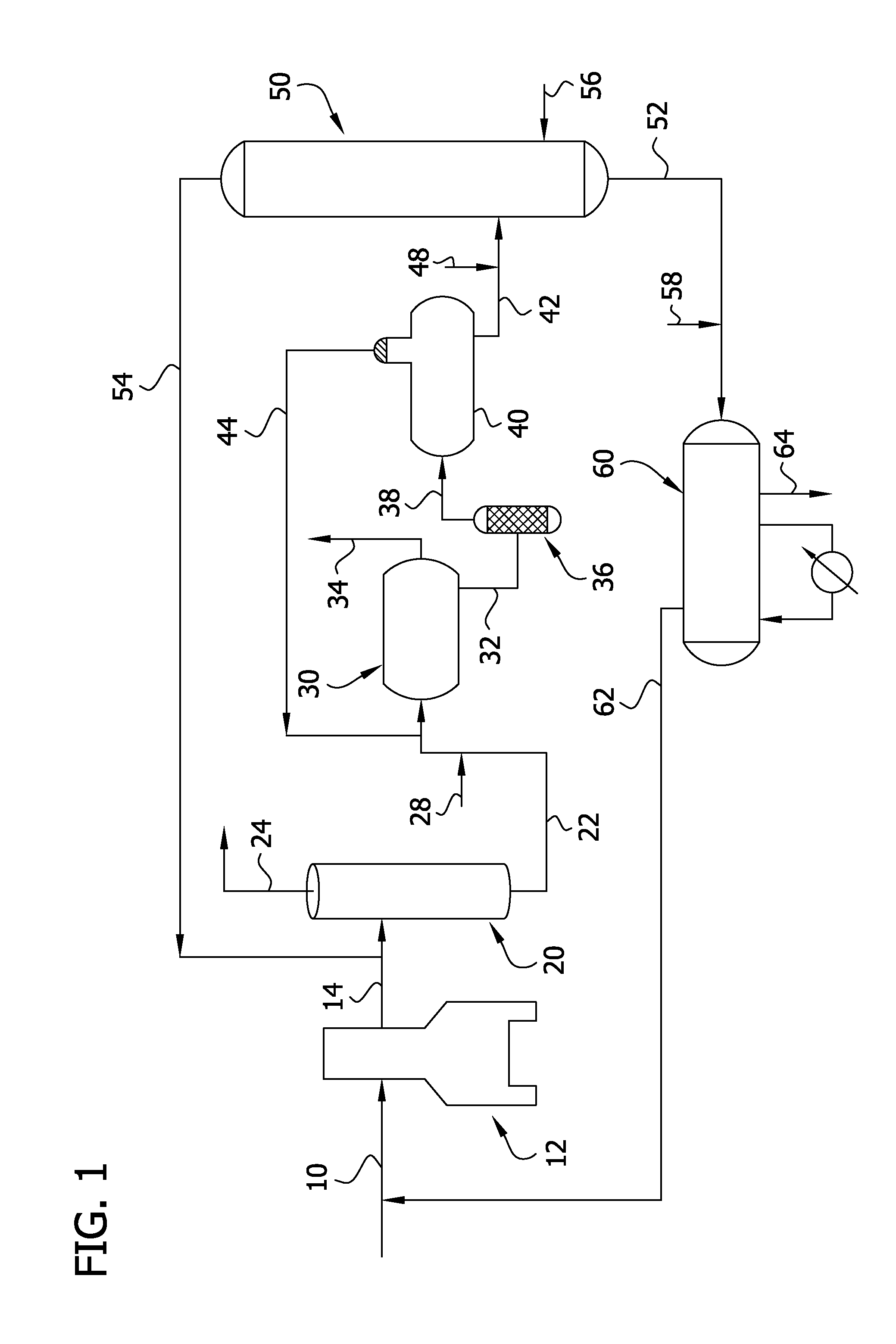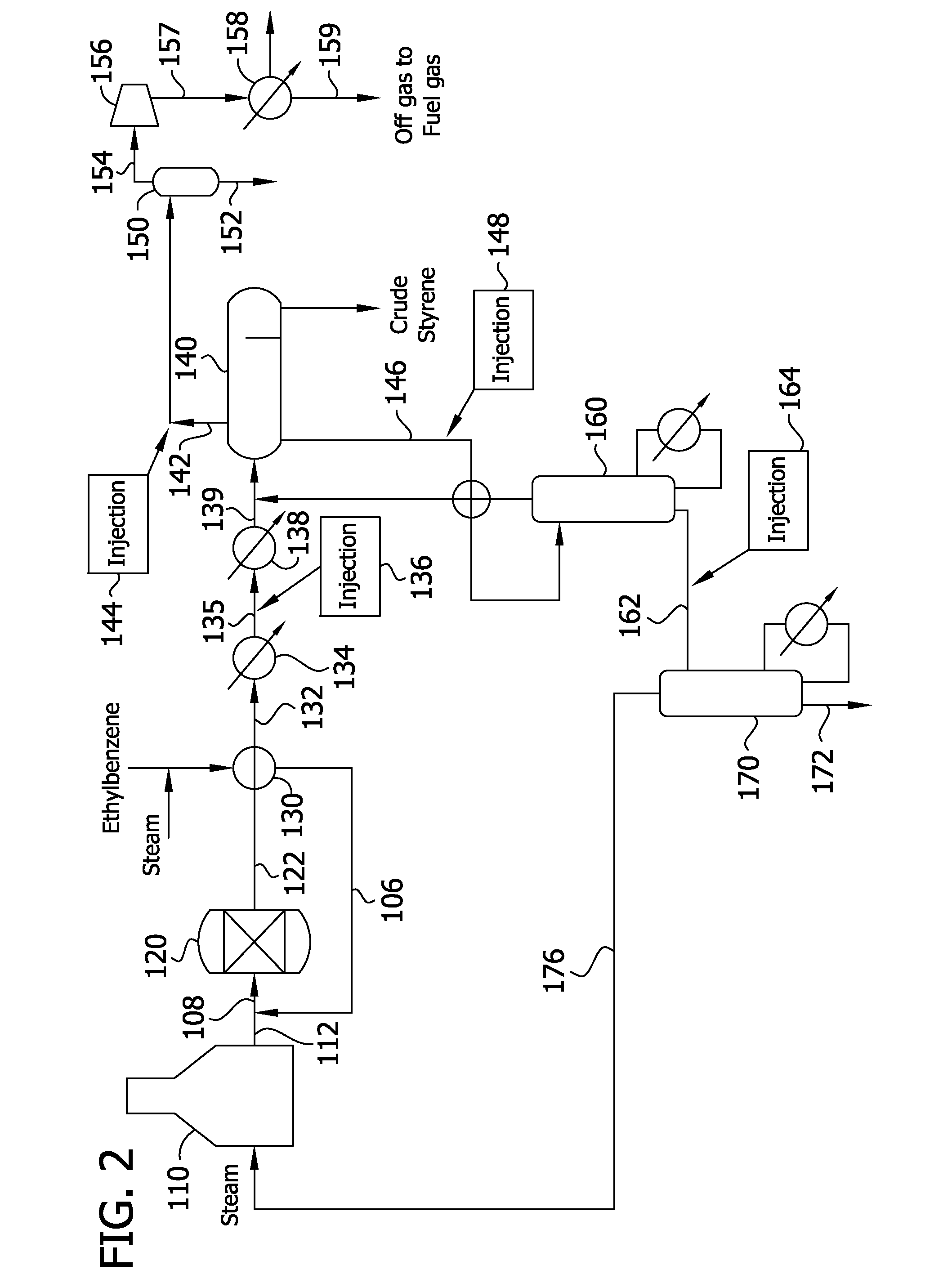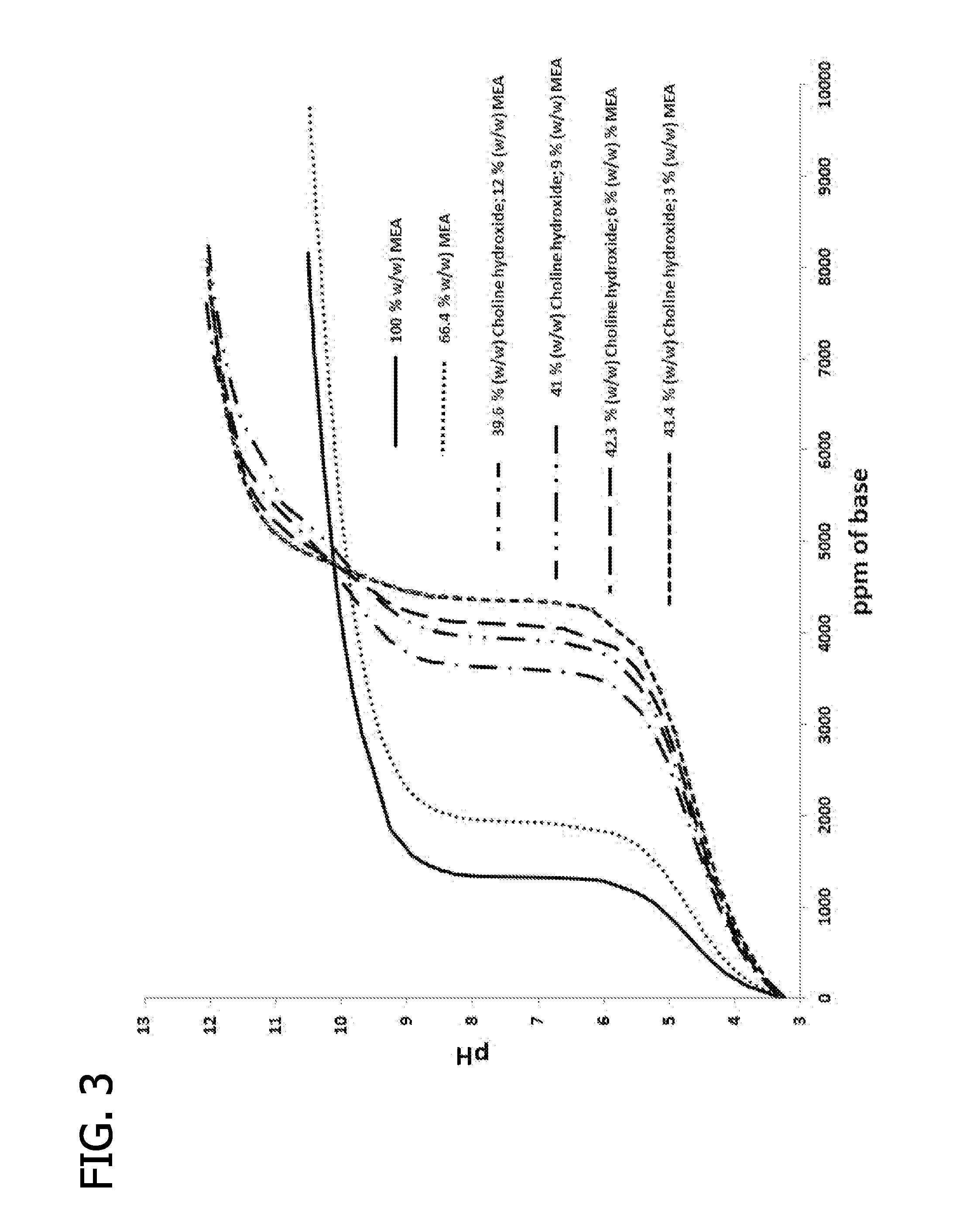Use of neutralizing agent in olefin or styrene production
a technology of olefin or styrene and neutralizing agent, which is applied in the direction of chemical inhibitors, chemistry apparatus and processes, other chemical processes, etc., can solve the problems of destroying the mechanical properties of the furnace radiant tube, reducing the degree of coking of the furnace and the shorter the run time, and small quantity of less desirable by-products
- Summary
- Abstract
- Description
- Claims
- Application Information
AI Technical Summary
Benefits of technology
Problems solved by technology
Method used
Image
Examples
example 1
Titration of 1300 Ppm of Acetic Acid with Neat Ethanolamine (MEA)
[0053]To test the comparative neutralization efficacy of MEA as a neutralizer, the solution was initially diluted according to the following procedure. Into a glass container was added 10.0 g of neat MEA. This was diluted to a total mass of 500 g using deionized water.
[0054]A solution of 1300 ppm acetic acid was prepared by adding 0.652 g of 99.7% (purity) glacial acetic acid to a 500 mL volumetric flask. To this flask was added deionized water to give 500 mL of final solution. A 30 mL aliquot of this solution was added to a 100 mL titration vial. Using a pH meter, the initial pH of this solution was measured. Thereafter, the diluted solution of neat MEA was added to the vial in small quantities at a time while the pH of the solution was measured at every point. The titration was continued until the solution had the target pH of 10.5. To reach this pH, 8154 ppm of the neutralizer was required.
example 2
Titration of 1300 Ppm of Acetic Acid with Choline Hydroxide
[0055]In the second example of comparative neutralization, 45% (w / w) choline hydroxide was initially diluted prior to the titration with 1300 ppm of acetic acid according to the procedure in Example 1. The titration was continued until the solution had the target pH of 10.5; 4820 ppm of the neutralizer was required to reach this pH.
example 3
Boiler-MEA Formulation Neutralization of Acetic Acid
[0056]At the temperature at which the ethylene plant boiler is operated, MEA is volatile such that a third of the neutralizer evaporates before neutralizing the acids in the water. To mimic the concentration of the MEA left in the boiler, a formulation containing 66.4% (w / w) of MEA and 33.6% (w / w) deionized water was prepared. This formulation was used to neutralize 30 mL of 1300 ppm acetic acid following the procedure in Example 1. To reach the target pH of 10.5, a total amount of 9792 ppm of the neutralizer formulation was added to the acetic acid solution.
PUM
| Property | Measurement | Unit |
|---|---|---|
| Weight | aaaaa | aaaaa |
| Concentration | aaaaa | aaaaa |
Abstract
Description
Claims
Application Information
 Login to View More
Login to View More - R&D
- Intellectual Property
- Life Sciences
- Materials
- Tech Scout
- Unparalleled Data Quality
- Higher Quality Content
- 60% Fewer Hallucinations
Browse by: Latest US Patents, China's latest patents, Technical Efficacy Thesaurus, Application Domain, Technology Topic, Popular Technical Reports.
© 2025 PatSnap. All rights reserved.Legal|Privacy policy|Modern Slavery Act Transparency Statement|Sitemap|About US| Contact US: help@patsnap.com



